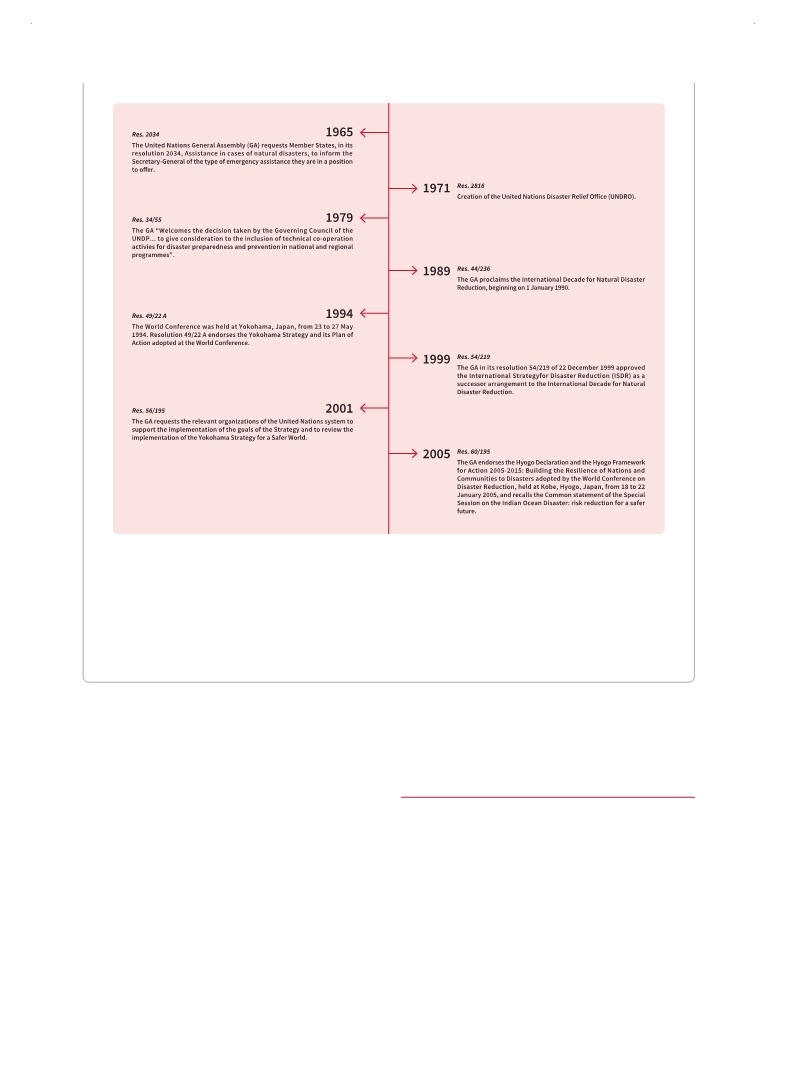 |
Global Assessment Report on Disaster Risk Reduction 2015
Making development sustainable: The future of disaster risk management |
 |
Global Assessment Report on Disaster Risk Reduction 2015
Making development sustainable: The future of disaster risk management |
|
|

28
Chapter 1
Figure 1.4 From disaster response to disaster risk reduction
(Source: adapted from UNISDR Virtual Library.)
(Source: International Law Commission, 2013
International Law Commission. 2013,Sixth report on the protection of persons in the event of disasters, Sixty-fifth session Geneva, 6 May-7 June and 8 July-9 August 2013, by Eduardo Valencia-Ospina, Special Rapporteur. Geneva: United Nations.. . In 2004 the UN General Assembly convened the second World Conference on Disaster Risk Reduction, held in Kobe in 2005, to build on the Yokohama Strategy and the Johannesburg Plan of Action. The resulting Hyogo Declaration emphasized the reduction of vulnerabilities and the strengthening of resilience of nations and communities “in the context of the disaster reduction cycle, which consists of prevention, preparedness, and emergency response, as well as recovery and reconstruction”.
1.3 The emergence of the disaster
risk management sector
An evolution from managing disasters to managing risks has slowly taken shape at national and international levels. At its centre has been the disaster management cycle.
A national system is born
On 13 November 1985, the Nevado del Ruiz Volcano in Colombia erupted. Although the government had received multiple warnings of volcanic
in lives and in the social and economic assets of communities and countries”, has really been achieved and therefore whether the way disaster risk reduction has been understood and practised by most countries is really fit for purpose.
|
 
Page 1Page 10Page 18Page 19Page 20Page 21Page 22Page 23Page 24Page 25Page 26Page 27Page 28Page 29->Page 30Page 31Page 32Page 33Page 34Page 35Page 36Page 37Page 38Page 39Page 40Page 41Page 42Page 50Page 60Page 70Page 80Page 90Page 100Page 110Page 120Page 130Page 140Page 150Page 160Page 170Page 180Page 190Page 200Page 210Page 220Page 230Page 240Page 250Page 260Page 270Page 280Page 290Page 300Page 310
|
|
 
|
 
|
